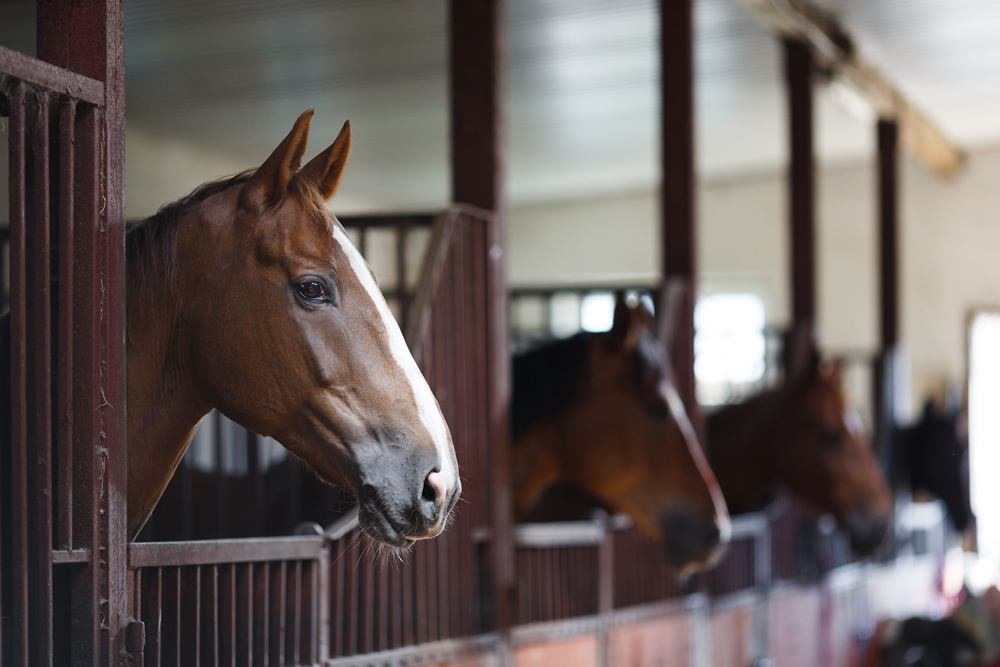When horse fans make a $2 bet at the track, they might be sentencing their chosen thoroughbred to death.
A staggering 4,649 racehorses died on the track between 2009 and 2015, according to data published by The Jockey Club. A later 2018 analysis published by the same organization found an aggregate “fatal injury” rate of 1.68 for every 1,000 race starts. Age, surface, and other factors all play a role in “breakdowns,” the euphemism often used when a horse drops dead on the track, but performance enhancing drugs exacerbate matters, according to activists.  “Performance enhancing drugs and overuse of therapeutics put horses and their jockeys in danger because the horse may run faster than its bone and ligament structure can sustain,” said Marty Irby, executive director of Animal Wellness Action, an animal advocacy non-profit. “Some people may think horses are healthy because of therapeutics, but they may have injuries covered up with pain-masking agents, and thus a significantly higher chance of a breakdown. Currently, there are no restrictions on therapeutics, and no testing for horses in training.”
“Performance enhancing drugs and overuse of therapeutics put horses and their jockeys in danger because the horse may run faster than its bone and ligament structure can sustain,” said Marty Irby, executive director of Animal Wellness Action, an animal advocacy non-profit. “Some people may think horses are healthy because of therapeutics, but they may have injuries covered up with pain-masking agents, and thus a significantly higher chance of a breakdown. Currently, there are no restrictions on therapeutics, and no testing for horses in training.”
That may change soon, however, with a new bipartisan bill currently before the Senate. The Horseracing Integrity Act, proposed by U.S. Senators Kirsten Gillibrand (D-NY) and Martha McSally (R-AZ), aims to ban doping and create a uniform drug-testing standard under the U.S. Anti-Doping Agency. Arizona and New York are two of the country’s top horse racing states.
“Horses should run on hay, oats, and water, not on a cocktail of performance enhancers and medications,” Irby told “Advisors Magazine” by email. “We applaud Senators Gillibrand and McSally and are pleased to join together to end a shameful period where unscrupulous trainers have put horses and jockeys at risk.”
The Jockey Club agreed in a 2018 news release explaining its Equine Injury Database, a collection of injury and death statistics from racetracks around the country. Professor Tim Parkin, a veterinarian and consultant to the EID noted that substance abuse constituted a major risk factor for racehorses.
“Analysis of the EID has demonstrated that there are a multitude of factors that contribute to the risk of fatal injuries in Thoroughbred racehorses,” Parkin said at the time. “Moving forward, we should focus on the medications present in horses during racing and training, transparency of veterinary records for all starters and the collection of injury data from morning training hours.”
No national horseracing regulatory body exists, and rules vary in each state. That means change comes slowly in the industry and it can take years for effective reforms to pass, Irby said. Despite this, inter-state competition remains the norm and 90 percent of wagers in any given race are on out-of-state horses. Several organizations have pushed federal lawmakers since 2015 to begin regulating the industry and end the inconsistencies that, according to them, put horses at risk.
Most advocates do not oppose horseracing itself, Irby said, but industry reluctance to address its own problems could change that.
“The unending stream of bad publicity, ugly incidents, and stubborn refusal by some within industry – like Churchill Downs and The Kentucky Derby – to accept legitimate reforms is pushing more and more animal advocates to oppose the sport,” Irby said. “If there is no legislative remedy, we'll see more mainstream groups take up the issue and more grassroots groups emerge to take on the problem. Then the debate will shift away from doping in horse racing to horse racing itself.”


